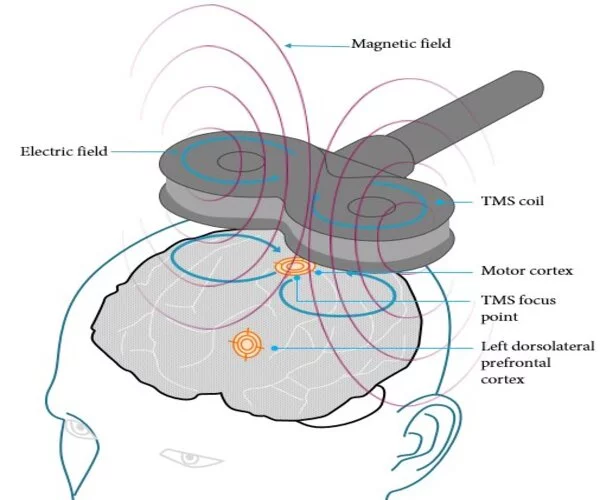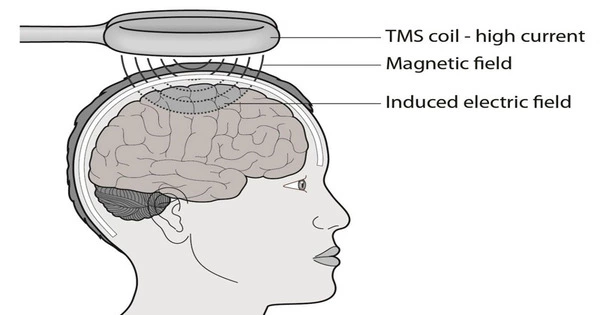Transcranial magnetic stimulation (TMS) is a non-invasive method of stimulating the brain that uses magnetic fields to induce electrical currents in the brain. The design of TMS has advanced to allow for deeper stimulation into the brain, which can help to treat certain neurological and psychiatric conditions. This is achieved through the use of specialized TMS coils that can generate stronger and more focused magnetic fields. By stimulating deeper structures in the brain, TMS may provide more targeted and effective treatment options for conditions such as depression, chronic pain, and Parkinson’s disease. However, further research is needed to fully understand the potential benefits and risks of deep TMS.
Transcranial magnetic stimulation (TMS) has great potential as a noninvasive neuromodulation method for treating a variety of mental and psychiatric diseases, including major depression. Stimulating the deep brain allows researchers to investigate the causes and potential treatments for psychiatric diseases, but current methods do not go far enough and are mostly limited to superficial targets within the brain.
A group of Chinese researchers from Chengdu University of Technology and Huazhong University of Science and Technology presents a new TMS array with a special geometrical-shaped magnet structure to help stimulate deeper tissue within the brain in AIP Advances, published by AIP Publishing.
Deep brain stimulation uses an electromagnetic field or signal’s penetrating ability to target the membrane potential of deep brain neurons and change the polarization or depolarization effect to achieve neuromodulation.
Xiao Fang
“Given the approximate spherical structure of the human head, I wondered if special-shaped coils could be more advantageous than flat coils,” said co-author Xiao Fang, who has been working on TMS for nearly eight years. “When I was studying at Wuhan National High Magnetic Field Center in 2016, we had a magnet design department in our lab, and they did some research regarding special-shaped magnets for electromagnetic shaping. We were inspired to use shaped magnets in bioelectromagnetic stimulation after seeing their research posters.”
External stimuli send electrical and chemical signals through neurons in the brain to transmit information.

“Deep brain stimulation uses an electromagnetic field or signal’s penetrating ability to target the membrane potential of deep brain neurons and change the polarization or depolarization effect to achieve neuromodulation,” Fang explained.
The group’s new spatially symmetric array, which is based on a curved type of coil, outperforms traditional TMS coils in terms of deep brain stimulation performance. “It enables focalized stimulation within the deep brain, exposing fewer untargeted tissues to strong stimulation,” Fang explained. “In addition, the array’s stimulation target location can be flexibly and continuously adjusted.”
This array’s special geometric design enables deep brain-focused stimulation 11 centimeters below the scalp. “That is 1.67 times deeper than conventional planar stimulation arrays when producing the same focusing area, which effectively improves the stimulation effect,” Fang said.
The group’s design is mainly intended for deep brain stimulation, such as the treatment of major depression, and its target area is the ventromedial prefrontal cortex region located 7 centimeters beneath the human scalp.
The design of TMS devices has evolved over the years, allowing for deeper and more targeted stimulation of specific areas of the brain. Advances in magnetic coil design, current strength, and pulse duration have allowed for greater precision in TMS stimulation. However, the depth of TMS stimulation still depends on several factors such as the type of coil used, the intensity of the magnetic field, and the thickness of the skull. Further research is ongoing to improve TMS technology and increase its effectiveness in various medical and therapeutic applications.
















